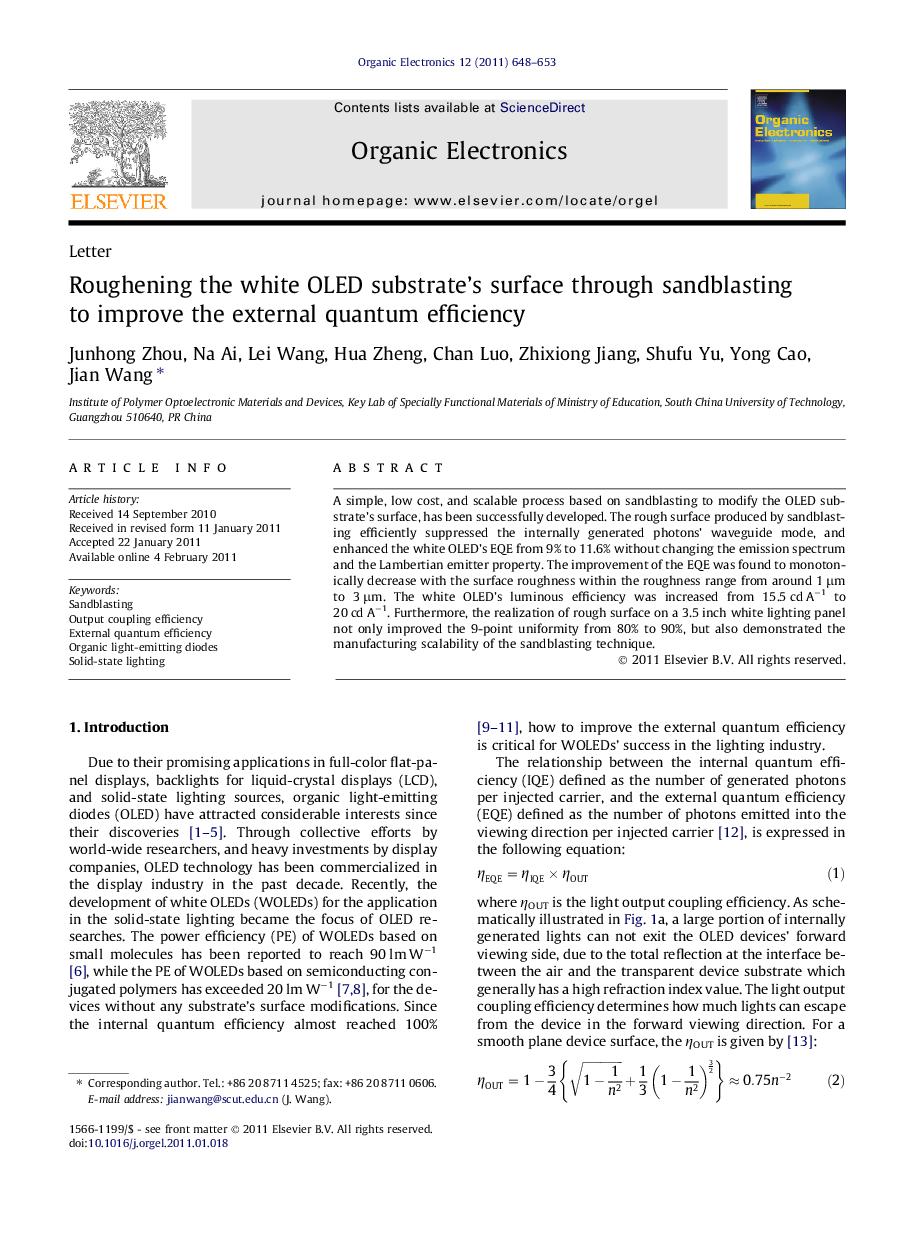| Article ID | Journal | Published Year | Pages | File Type |
|---|---|---|---|---|
| 1265438 | Organic Electronics | 2011 | 6 Pages |
A simple, low cost, and scalable process based on sandblasting to modify the OLED substrate’s surface, has been successfully developed. The rough surface produced by sandblasting efficiently suppressed the internally generated photons’ waveguide mode, and enhanced the white OLED’s EQE from 9% to 11.6% without changing the emission spectrum and the Lambertian emitter property. The improvement of the EQE was found to monotonically decrease with the surface roughness within the roughness range from around 1 μm to 3 μm. The white OLED’s luminous efficiency was increased from 15.5 cd A−1 to 20 cd A−1. Furthermore, the realization of rough surface on a 3.5 inch white lighting panel not only improved the 9-point uniformity from 80% to 90%, but also demonstrated the manufacturing scalability of the sandblasting technique.
Graphical abstractSandblasting technique provides a simple, low cost, and scalable process to modify the OLED substrate’s surface. The rough surface suppressed the internally generated photons’ waveguide mode, and enhanced the WOLED’s EQE from 9% to 11.6% without changing the emission spectrum and the Lambertian emitter property. The improvement of the EQE monotonically decreases with the surface roughness from 1 μm to 3 μm. The manufacturing scalability of the sandblasting technique was demonstrated on a 3.5 inch white lighting panel.Figure optionsDownload full-size imageDownload as PowerPoint slideResearch highlights► The rough surface enhanced the WOLED’s EQE from 9% to 11.6% without changing the emission spectrum. ► The improvement of the EQE monotonically decreased with the surface roughness from around 1 μm to 3 μm. ► The manufacturing scalability of sandblasting was demonstrated on a 3.5 inch lighting panel.
